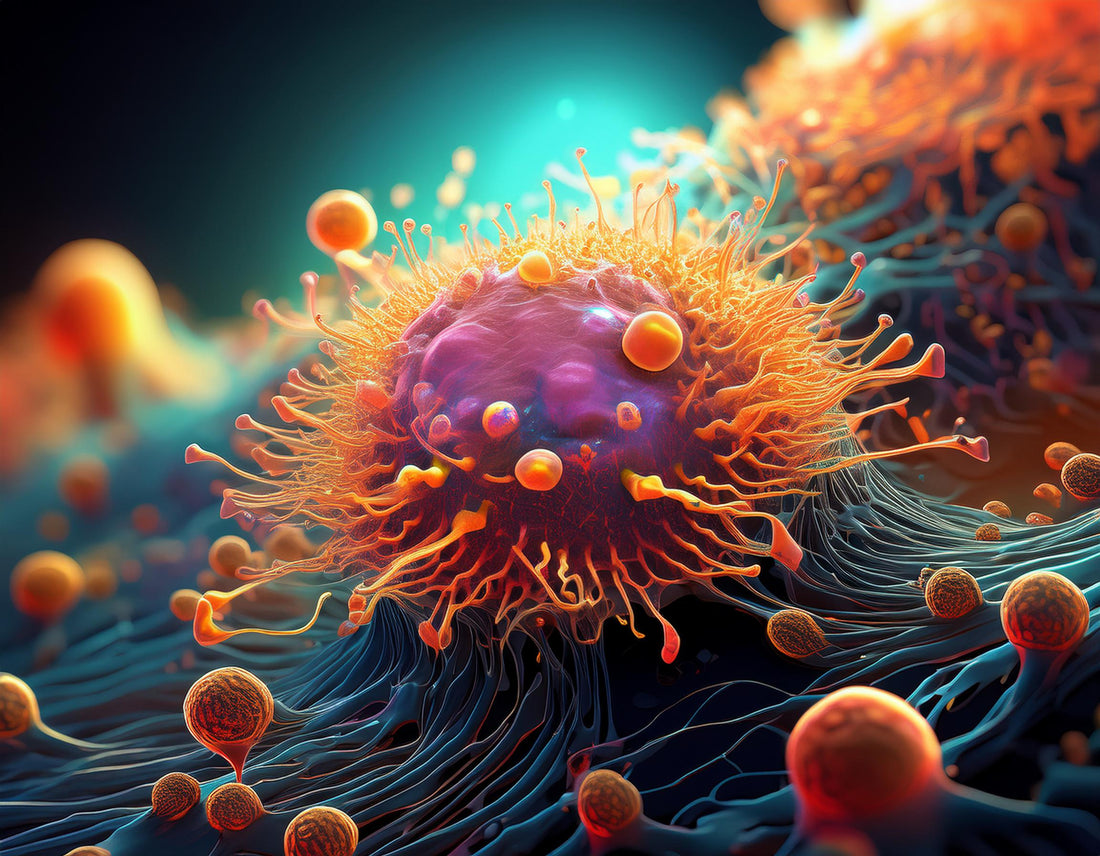Bacterial spores represent one of the most resilient forms of life, capable of withstanding extreme environmental conditions.
This resilience poses a significant challenge in healthcare settings, particularly with pathogens such as Clostridium difficile (C. difficile), notorious for causing severe healthcare-associated infections (HAIs).
Hypochlorous, which is produced by electrochemical activation alongside sodium hydroxide has emerged as a potent biocide capable of effectively eliminating these resilient spores. This article delves into the specific mechanisms by which HOCL disrupts and eliminates bacterial spores, with a particular focus on C. difficile.
Structure and Resilience of Bacterial Spores
- Spore Coat: The outermost layer composed primarily of cross-linked proteins, providing physical protection against chemical and enzymatic attacks.
- Cortex: Located beneath the spore coat, this thick layer of peptidoglycan is essential for maintaining spore dehydration and dormancy.
- Core: The innermost compartment, housing the spore's DNA, ribosomes, and essential enzymes. The core is highly dehydrated and contains high levels of calcium dipicolinate, which contributes to heat resistance and DNA stabilization.
Within the electrochemically activated solution, hypochlorous has the effectiveness against bacterial spores, including those of C. difficile. This can be attributed to several key mechanisms:
The spore coat is rich in cysteine-containing proteins with thiol (-SH) groups. HOCL readily oxidizes these thiol groups to disulfides or sulfenic acids, leading to the disruption of the protein structure and function. This oxidation weakens the integrity of the spore coat, allowing further penetration of HOCL into the spore.
The extensive cross-linking of spore coat proteins is essential for spore resistance. HOCl’s ability to break these cross-links compromises the spore coat's barrier function, making the inner layers more vulnerable to attack.
The cortex, made up of modified peptidoglycan, is crucial for maintaining the spore's dormant state. HOCl can oxidize the glycan chains in the peptidoglycan, leading to the breakdown of this essential layer. This degradation is significant because the cortex’s structural integrity is vital for spore resistance to environmental stress. Induction of Core Rehydration: The degradation of the cortex by HOCL disrupts the osmotic balance, leading to the rehydration of the spore core. This rehydration is detrimental to the spore as it disrupts the dormant state, making the spore more susceptible to further oxidative damage.
Once HOCL penetrates the core, it causes oxidative damage to the spore’s DNA and essential enzymes. HOCL induces the formation of DNA lesions, such as 8-oxoguanine, which leads to breaks in the DNA strands. The damage to DNA is particularly devastating because the spore’s repair mechanisms are inactive in the dormant state.
The core's stability is partly due to the presence of calcium dipicolinate, which helps protect the DNA from heat and desiccation. HOCL can react with this compound, disrupting its ability to protect the DNA, leading to increased susceptibility to damage.
Efficacy of HOCL Against C. difficile Spores
Clostridium difficile spores are notoriously difficult to eliminate due to their robust protective layers. However, HOCl has been shown to be particularly effective against these spores:
Microbiological Test Data have demonstrated that HOCL at concentrations as low as 50-100 ppm can achieve significant reductions in C. difficile spore counts with relatively short contact time.
This makes HOCL a highly efficient sporicide for use in healthcare settings. Beyond mere inactivation, HOCL-treated spores exhibit reduced infectivity, meaning that even if some spores survive, their ability to cause infection is greatly diminished. This is crucial for controlling the spread of C. difficile in hospitals.
Advantages of HOCl Over Other Disinfectants
HOCl’s ability to eliminate bacterial spores is complemented by several practical advantages that make it superior to traditional disinfectants:
- Non-Toxicity: Unlike harsh chemical disinfectants such as chlorine (sodium hypochlorite, sodium chloride), HOCL is non-toxic at concentrations used for disinfection. It is safe for use on surfaces, including those that come into contact with food or medical equipment.
- Environmental Friendliness: HOCL degrades back into water and salt after using itself up on pathogens. This makes it harmless to the environment. This is in stark contrast to some disinfectants that leave behind harmful residues.
- Compatibility with Surfaces: HOCL is less corrosive than many other disinfectants, making it suitable for use on a wide range of materials, including metals, plastics, and fabrics. This property is particularly important in healthcare settings where frequent disinfection of medical equipment is necessary.
Hypochlorous (HOCL) and Electrochemically activated solutions (ECAS) represents a powerful and versatile biocide capable of effectively eliminating bacterial spores, including those of Clostridium difficile. Its ability to penetrate the spore coat, disrupt the cortex, and damage the core makes it a particularly potent sporicide. Given its safety, environmental friendliness, and efficacy, HOCL is an invaluable tool in the ongoing battle against healthcare-associated infections, especially those involving spore-forming pathogens. Having the ability to use onsite generation methods enhances its use in clinical settings.

